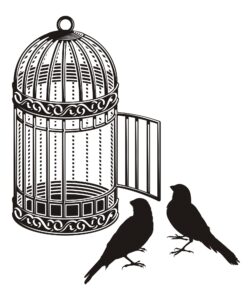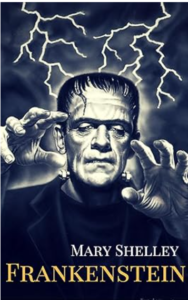WHERE TO FIND BETA READERS
DEPENDS ON TWO THINGS:

Some writers have no-to-little money to work with and they will take one route. Other writers have no time but have some money to work with. Where you are on this road will determine what your choices are.
I HAVE TIME BUT NO MONEY:
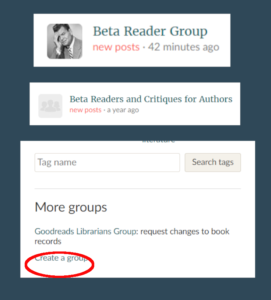 This could be a person who works full time, lives alone, or has a few kids and there is just not enough extra money around to fund all the things necessary to do when self-publishing a book. Not to worry. There are a few choices for you.
This could be a person who works full time, lives alone, or has a few kids and there is just not enough extra money around to fund all the things necessary to do when self-publishing a book. Not to worry. There are a few choices for you.
Goodreads.com is an active website for readers and authors and is filled with other authors who are also looking for help to publish their books. The trick is to find them.
If you search "Beta Readers" in the search box on Goodreads, it will bring up all of the beta reader groups that are available to you at that time. You can access this under the community tab on the navigation menu. Be sure to read the rules and regulations for the specific group because the last time I looked, there were a few Gestapo-like warnings and instructionals about how people should post.
If you happen to be extraverted or bubbly, good with people, you will have no trouble finding someone in one of these groups or forums to help you. I'm introverted and don't do well in these large groups because I always feel like I'm bothering people. But not everyone is like this, so if you are good at making acquaintances and friends, give Goodreads a try.
Try to google "beta readers" as well and you will find other forums that claim to have people willing to read your book. I never gave this much patience because I chose to just pay someone.
TRY A FAMILY MEMBER AS A BETA READER:
If you have a family member who you can trust to give you honest feedback and gentle criticism, this is probably the best choice. Make sure it's someone who will want to do a good job for you and they will know you are counting on them. That's what I did. My Aunt Gen offered to read my books and I jumped at the chance. She read them and kept a notepad by her book and jotted down everything she thought about.
I also had a friend who needed computer help and I bartered with her for beta reading. That was also a great experience.
The trick to making working with amateurs, so to speak, work is knowing two things. (1) Your readers will feel that they have to give you some level of criticism so you have to be ready to make that work for you. I'll go into that below. (2) The second thing is that sometimes people will give you advice about writing books that come out of left field. They will not know what they are talking about, so it's important to be prepared for this. Just be ready to thank them for their ideas.
Once you have chosen a family member or friend to beat read for you, you need to direct their attention to what it is you are interested in having them do. Tell them that after they read the book, you will want to know the following 5 things:
- Do you like the characters?
- Is the plot easy enough to follow or was it confusing at any point?
- Were there any plot holes or anything about the plot that felt unfinished?
- How were the character and location descriptions?
- Did my prose read easily or did you find yourself having to re-read sentences sometimes?
That's it. Let them have the book with those questions. Then after they're done, you can ask them other questions. By guiding them as to what you want to know, you will get feedback and criticism that is helpful.
I HAVE MONEY BUT NOT TIME:
If you are working, raising kids, or just working 60 hours a week, you probably have a few extra dollars and will need to get someone two help you for a reasonable price. There are full industries that have sprung up around the entire self-publishing industry, but it's important to know how not to be ripped off!
I used Fiverr.com for my beta readers. I found someone who was willing to read my book and give me feedback. The person I chose read the book in Microsoft Word and she used commenting in the Track Changes feature. I hadn't thought of this myself at that point. She commented all throughout the book. This was so valuable because it was like being in the reader's head when she read the book.
I gave her my list of 5 questions above and between her answering the questions and commenting throughout the book, she did a great job. She charged me $80. This was back in 2022 so it may have gone up to $100, but I believe it's still worth it.
I have become a repeat Fiverr user as I have had nothing but good experiences on their website.
Here is a video you may like where I go over pretty much the same material I just explained in the blog post.

 A Beta Reader is someone who reads the book to give you feedback as to whether people will even like the story. A beta reader knows they are reading a book that is not ready to be released. They are aware or should be made aware that they will be asked for feedback as part of the final crafting of the book process.
A Beta Reader is someone who reads the book to give you feedback as to whether people will even like the story. A beta reader knows they are reading a book that is not ready to be released. They are aware or should be made aware that they will be asked for feedback as part of the final crafting of the book process. I chose to use Bookfunnel or SiteOrigin to release my ARC copies so that I could get the readers' emails to be able to contact them with a gentle reminder to review the book when it was released. Sounds innocent enough, right?
I chose to use Bookfunnel or SiteOrigin to release my ARC copies so that I could get the readers' emails to be able to contact them with a gentle reminder to review the book when it was released. Sounds innocent enough, right? I decided to go to Fiverr.com and hire a beta reader for $80.00. Go to Fiverr.com and type in "Beta Reader" in the search box. Look specifically for those who have done it a few times and have a 4 to 5 star rating. It's that easy.
I decided to go to Fiverr.com and hire a beta reader for $80.00. Go to Fiverr.com and type in "Beta Reader" in the search box. Look specifically for those who have done it a few times and have a 4 to 5 star rating. It's that easy. I will continue to request ARC readers and I include a questionnaire in the back of the ARC copies. Several readers do take the time to fill them out for me. It's so valuable. Each one has a different take on things.
I will continue to request ARC readers and I include a questionnaire in the back of the ARC copies. Several readers do take the time to fill them out for me. It's so valuable. Each one has a different take on things. After release, I only send one gentle-reminder email asking for a review after the book is released. Not everyone posts a review, but that's okay. If I get a few, again, I'm thankful. If they are members of my newsletter list, I usually put an announcement that the book has been released and this serves as a second gentle reminder.
After release, I only send one gentle-reminder email asking for a review after the book is released. Not everyone posts a review, but that's okay. If I get a few, again, I'm thankful. If they are members of my newsletter list, I usually put an announcement that the book has been released and this serves as a second gentle reminder. The take away is -- at least in my humble opinion -- you don't need a whole team of 10 or 20 people to release a book. If you have one beta reader, a professional editor that you trust, and get feedback questionnaires from a few readers, that's enough. After all, at the end of the day, some people will love your work and some may hate it. You're writing for your own readership -- not for those people who don't like your work.
The take away is -- at least in my humble opinion -- you don't need a whole team of 10 or 20 people to release a book. If you have one beta reader, a professional editor that you trust, and get feedback questionnaires from a few readers, that's enough. After all, at the end of the day, some people will love your work and some may hate it. You're writing for your own readership -- not for those people who don't like your work. The most important lesson I ever learned about Beta Readers and ARC readers -- in releasing a book in general -- is that it takes time. I need at least eight weeks to do a full ARC campaign, and two weeks for a beta extra for the beta readers and editor. When I was new, I had no idea of needing to do so many things before release.
The most important lesson I ever learned about Beta Readers and ARC readers -- in releasing a book in general -- is that it takes time. I need at least eight weeks to do a full ARC campaign, and two weeks for a beta extra for the beta readers and editor. When I was new, I had no idea of needing to do so many things before release.

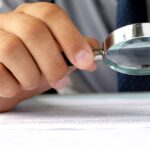 When I first decided to write a novel, it took me one full year (I’m not kidding!) to even come up with a crime. Today, using these methods I’m about to reveal, it only takes me two to three days to think up three or four mystery scenarios.
When I first decided to write a novel, it took me one full year (I’m not kidding!) to even come up with a crime. Today, using these methods I’m about to reveal, it only takes me two to three days to think up three or four mystery scenarios.
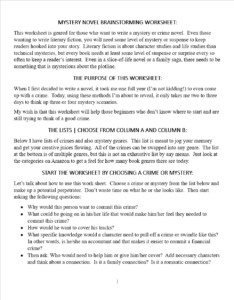 Let’s talk about how to use this work sheet. Choose a crime or mystery from the list below and make up a potential perpetrator. Don’t waste time on what he or she looks like. Then start asking the following questions:
Let’s talk about how to use this work sheet. Choose a crime or mystery from the list below and make up a potential perpetrator. Don’t waste time on what he or she looks like. Then start asking the following questions: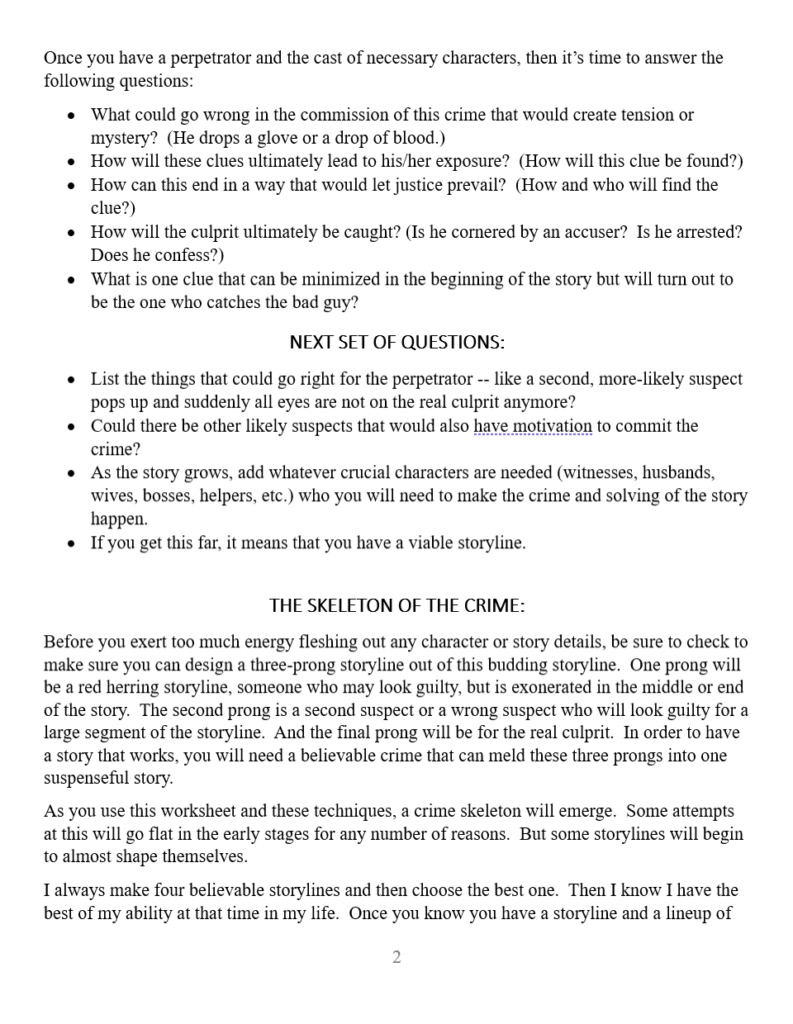 Once you have a perpetrator and the cast of necessary characters, then it’s time to answer the following questions:
Once you have a perpetrator and the cast of necessary characters, then it’s time to answer the following questions: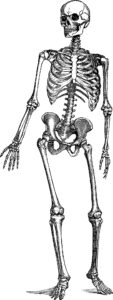 Before you exert too much energy fleshing out any character or story details, be sure to check to make sure you can design a three-prong storyline out of this budding storyline. One prong will be a red herring storyline, someone who may look guilty, but is exonerated in the middle or end of the story. The second prong is a second suspect or a wrong suspect who will look guilty for a large segment of the storyline. And the final prong will be for the real culprit. In order to have a story that works, you will need a believable crime that can meld these three prongs into one suspenseful story.
Before you exert too much energy fleshing out any character or story details, be sure to check to make sure you can design a three-prong storyline out of this budding storyline. One prong will be a red herring storyline, someone who may look guilty, but is exonerated in the middle or end of the story. The second prong is a second suspect or a wrong suspect who will look guilty for a large segment of the storyline. And the final prong will be for the real culprit. In order to have a story that works, you will need a believable crime that can meld these three prongs into one suspenseful story.
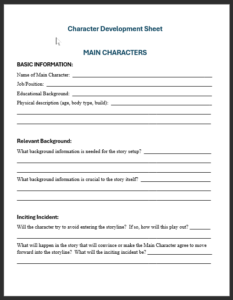 When I started writing several years ago, I came across the standard character worksheet and it focused mostly on physical attributes, occupation but there was a disconnect regarding their role in the storyline, which is the most important part.
When I started writing several years ago, I came across the standard character worksheet and it focused mostly on physical attributes, occupation but there was a disconnect regarding their role in the storyline, which is the most important part.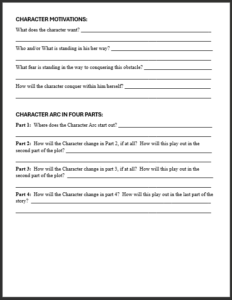 As a newbie, it took me awhile to remember that a character needs to have an arc over the storyline. So it's important -- and time saving -- to know what that arc will be before you even begin the draft. This character sheet can help you find this so you know where you are starting from and where you want to end up. The following questions should help you focus on what this character arc will be:
As a newbie, it took me awhile to remember that a character needs to have an arc over the storyline. So it's important -- and time saving -- to know what that arc will be before you even begin the draft. This character sheet can help you find this so you know where you are starting from and where you want to end up. The following questions should help you focus on what this character arc will be: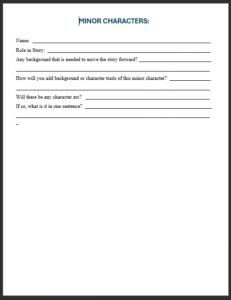 For minor characters, you only need to answer a few questions. It helps to know what role these minor characters will play and what, if any, background information is needed to support them in the storyline:
For minor characters, you only need to answer a few questions. It helps to know what role these minor characters will play and what, if any, background information is needed to support them in the storyline: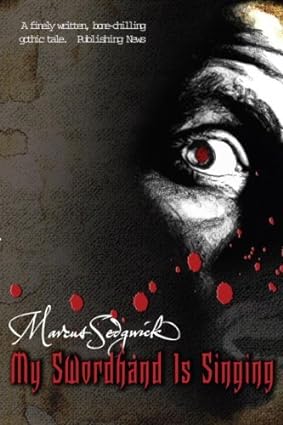









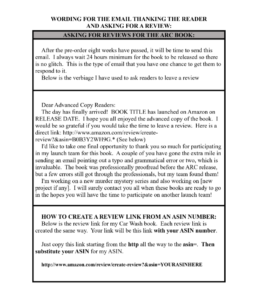

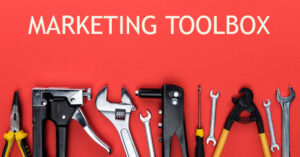 Now that you have a generic marketing calendar, it's time to assemble your toolbox. These are the things you will want to have close by when it's time to dedicate an hour or two to marketing.
Now that you have a generic marketing calendar, it's time to assemble your toolbox. These are the things you will want to have close by when it's time to dedicate an hour or two to marketing.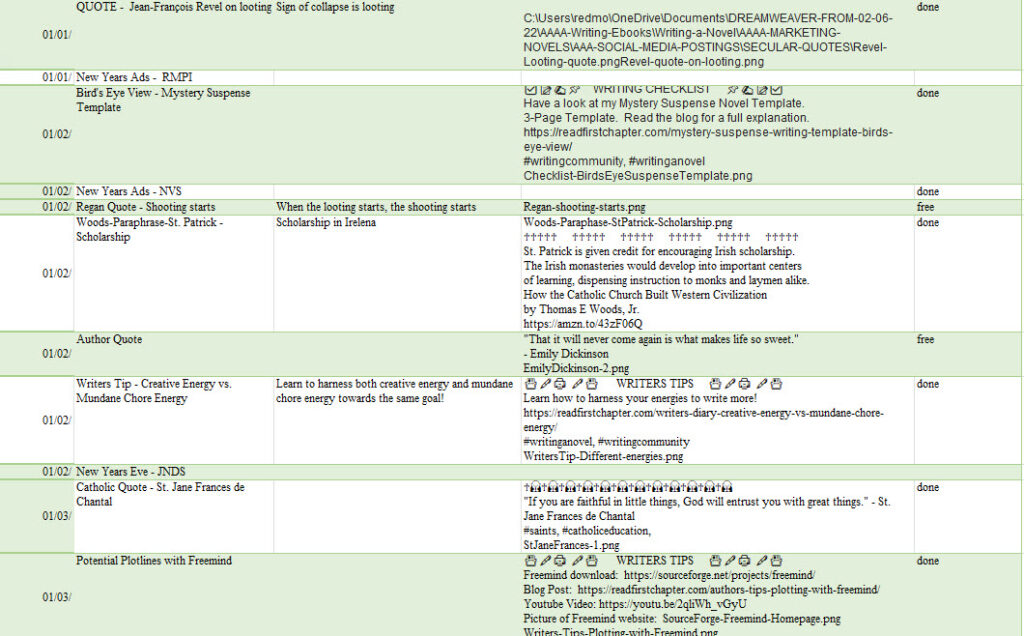
 Along with the 72 dpi book cover, you will need short blurbs about your book or books. Starting at about 150 words, keep whittling the blurb down until you have several blurbs with the last one being about one sentence (for Amazon ads).
Along with the 72 dpi book cover, you will need short blurbs about your book or books. Starting at about 150 words, keep whittling the blurb down until you have several blurbs with the last one being about one sentence (for Amazon ads). Most younger people know what hashtags are. If you're a boomer like me (hee hee), you may need to brush up on what hashtags are. Go to YouTube and search out videos explaining hashtags. Someone will explain them to you.
Most younger people know what hashtags are. If you're a boomer like me (hee hee), you may need to brush up on what hashtags are. Go to YouTube and search out videos explaining hashtags. Someone will explain them to you.

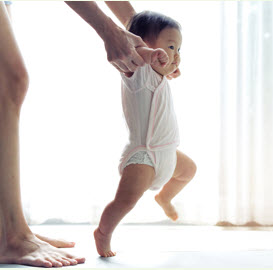 Book Marketing is a huge undertaking, but it starts with baby steps. When I was brand new, the mere subject of book marketing was enough to make me feel completely overwhelmed. However, now looking back, I see that it started with baby steps and book marketing isn't something you do, it's something you build.
Book Marketing is a huge undertaking, but it starts with baby steps. When I was brand new, the mere subject of book marketing was enough to make me feel completely overwhelmed. However, now looking back, I see that it started with baby steps and book marketing isn't something you do, it's something you build. This first installment is to set the framework of your marketing plan. The calendar list below is meant to be sort of a file box. Think of each holiday as a marketing opportunity. You will build your marketing plan by starting with this calendar.
This first installment is to set the framework of your marketing plan. The calendar list below is meant to be sort of a file box. Think of each holiday as a marketing opportunity. You will build your marketing plan by starting with this calendar.
 Earlier this year I started uploading YouTube videos targeting beginner writers and marketers who want to learn how to make their own book covers. Gimp is a free photo manipulation program -- completely free. Volunteer coders from around the world, unsung heroes, have worked on this computer program for the masses.
Earlier this year I started uploading YouTube videos targeting beginner writers and marketers who want to learn how to make their own book covers. Gimp is a free photo manipulation program -- completely free. Volunteer coders from around the world, unsung heroes, have worked on this computer program for the masses.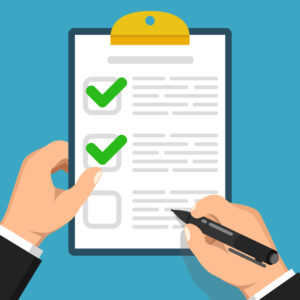 This is a checklist I wish I had when I first started out as an author. With the internet and research being at our fingertips, anyone can figure out how to write a first draft. In the world I live in, a first draft is nothing more than blurting out the story onto paper so you have something to begin working on.
This is a checklist I wish I had when I first started out as an author. With the internet and research being at our fingertips, anyone can figure out how to write a first draft. In the world I live in, a first draft is nothing more than blurting out the story onto paper so you have something to begin working on.
 By focusing on each element individually with these questions in mind, it will allow a new author to focus on only one element at a time. It prevents new authors from becoming overwhelmed by a general suggestion to take the whole novel up a notch.
By focusing on each element individually with these questions in mind, it will allow a new author to focus on only one element at a time. It prevents new authors from becoming overwhelmed by a general suggestion to take the whole novel up a notch.